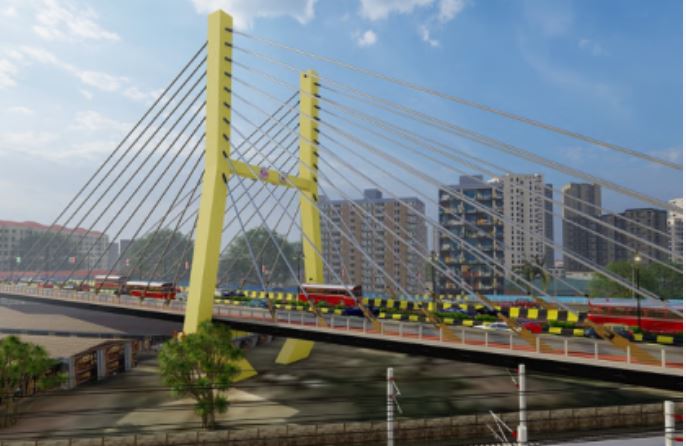Mumbai is set to witness a major infrastructure upgrade in the heart of the city, with the century-old Tilak Bridge in Dadar being replaced by a modern six-lane twin cable-stayed bridge. The ambitious redevelopment project, led by the Brihanmumbai Municipal Corporation (BMC), aims to significantly ease congestion and improve east-west connectivity in the bustling Dadar area.
The existing Tilak Bridge, which dates back to the early 20th century, has long served as a vital link connecting Dadar East and West over the railway lines. However, rising traffic volumes and aging infrastructure prompted authorities to plan for a complete overhaul.
The new twin bridge will feature two separate cable-stayed structures one for east-to-west traffic and the other for west-to-east movement, ensuring smoother and safer vehicular flow. Each structure will carry three lanes, bringing the total capacity to six lanes, and will include pedestrian walkways to ensure safe passage for foot traffic.
Construction work has already begun with the first phase focused on building one arm of the bridge alongside the existing structure. This phase is expected to be completed by 2026. Once operational, the old Tilak Bridge will be dismantled, and work will begin on the second arm.
Designed to withstand modern load requirements and to blend seamlessly with the urban skyline, the new cable-stayed bridge will not only serve as a functional upgrade but also as a landmark for the city. The project is part of a broader strategy by the BMC to modernize Mumbai’s aging bridges and enhance intra-city mobility.
Local residents and commuters have welcomed the move, hoping it will bring lasting relief from traffic snarls that have plagued the area for years. With its strategic location and modern design, the new Tilak Bridge is expected to become a key component of Mumbai’s evolving infrastructure landscape.
